Company Data
Management Philosophy
Fujikura Group 's approach to social contribution activities
Fujikura Group 's social contribution activities are based on Fujikura Group Corporate Philosophy MVCV and Fujikura Group CSR basic policy. In addition, Fujikura Group CSR Activity guideline are also the basis for our activities.
It all began in 1919 when former auditor Harukichi Nakauchi used his personal assets to establish Fujikura Gakuen, an educational facility for the intellectually handicapped person. Since then, we have supported Fujikura Gakuen both as a company and as individuals, and as part of Fujikura Group 's DNA, we have continued to observe and practice how companies interact with society as times change. Our history of social contribution activities dates back more than 100 years, beginning with the founding of Fujikura Gakuen. We intend to continue to cherish and protect our support for Fujikura Gakuen, viewing it as the starting point of Fujikura Group 's social contribution activities.
History of social contributions
Our predecessors first hammered the construction of a factory in Kiba, Koto Ward, Tokyo, in 1919. Since then, we have built a history of over 100 years together with the local people of Kiba.
From our founding in 1885 to the present day, we have nurtured and protected our corporate culture of "valuing our customers and living together with society," and have passed it down to the present day to each and every Fujikura employee. The social contribution activities undertaken by our predecessors as individuals and as a company remain unchanged today and are deeply rooted in our corporate culture.
| Gregorian calendar (Japanese calendar) | Content of contribution | |
|---|---|---|
| 1916 (Taisho 5) |
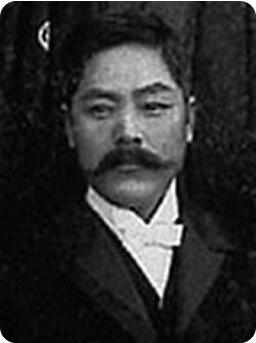
Kenzo Okada (former managing director) / Started private financial support |
In 1916 (Taisho 5), Kenzo Okada (former managing director) visited Principal Masazumi Kawada at Tokyo Prefectural First Junior High School (now Hibiya High School) and asked him to let him know if there were any students who were struggling with tuition fees. He offered tuition to students recommended by Principal Kawada, with no repayment obligation, unconditionally. Kenzo Okada was 43 years old at the time. Okada provided a certain amount of monthly tuition until the student finished his studies, without any conditions, to students who had great talent but were forced to give up on education due to lack of money for tuition. He nurtured many talented students. His only condition was, "Don't tell anyone. When I die, please gather together." In addition, when these students returned home, he and his wife would see them off at Tokyo Station, despite their busy schedules, and give them farewell gifts and souvenirs, and also kindly supported them on special occasions such as celebrations and condolences. The number of students they supported was over 10, and the students later formed the "Suzaku Society" to express their gratitude. |
| 1919 (Taisho 8) |
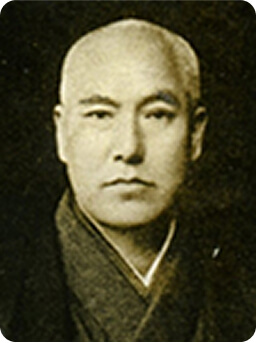
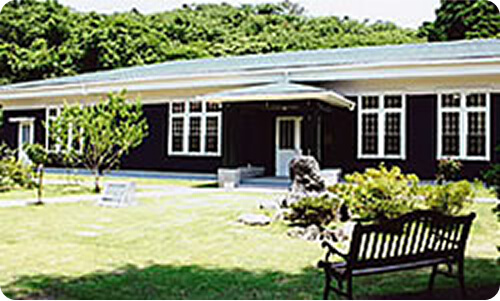
Harukichi Nakauchi (the founder's younger brother, former auditor) / Founded "Fujikura Gakuen" in Oshima |
Harukichi Nakauchi (the founder's younger brother, former auditor, and business) has long cherished the teachings of his late mother, who was a very charitable person, without forgetting them. He donated 230,000 yen of his personal assets (equivalent to about 2 billion yen today) and 130,000 square meters of land and buildings on Izu Oshima, entrusting these to social business Teijiro Kawada, who founded Fujikura Gakuen, a facility for intellectually disabled children on Izu Oshima, on June 7, 1919 (Taisho 8). Since then, Fujikura's successive presidents and executives have supported the management of Fujikura Gakuen, and many Fujikura employee have made donations to the institution. |
| 1929 (1929) |
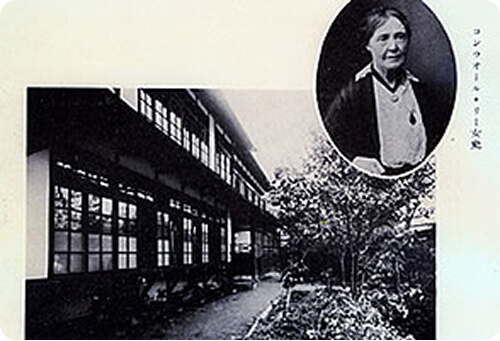
Matsumoto Tomekichi (first president) / Donated the new "Kusatsu St. Barnabas Hospital" for leprosy patients |
Upon turning 60, Matsumoto Tomekichi (our first president) was searching for a way to contribute to society. While visiting the home of his close friend and fellow countryman, Vice Minister of the Imperial Household Ministry, Sekiya Teizaburo, he heard from his wife, Kinuko, about the reconstruction of a hospital run by British missionary Cornwall Lee, who dedicated business to the relief of leprosy patients. He immediately offered to donate (for the construction of a new hospital in Kusatsu and the dispatch of doctors). Matsumoto Tomekichi requested that the donation be made in his name, unmasked. He donated 70,000 yen for the construction of the hospital and 30,000 yen for 10 years' worth of doctors, for a total of 100,000 yen (approximately 300 million yen today). In November 1929 (Showa 4), the new "Kusatsu St. Barnabas Hospital" opened. Thanks to Matsumoto Tomekichi's donation, the St. Barnabas Hospital was an unprecedented facility for a facility primarily focused on leprosy. The hospital no longer exists. |
| 1935 (1935) |
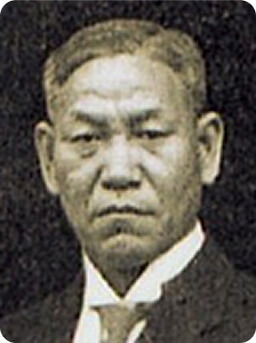
Matsumoto Tomekichi (first president) / Donated all 530 volumes of "Gunsho Ruiju" by Hanawa Hokiichi to the establishment of "Ninomiya Bunko" (currently Tochigi Prefectural Library) |
In 1935 (Showa 10), Matsumoto Tomekichi (the first president) donated all 530 volumes of Gunsho Ruiju, a valuable history book written by Hanawa Hokiichi, a scholar of Japanese classics from the Edo period, which he had loved to read and treasured as a family heirloom, to the Ninomiya Bunko (now Tochigi Prefectural Library) on its opening. Ninomiya Bunko was established in Matsumoto Tomekichi's hometown of Tochigi Prefecture to commemorate the 50th anniversary of Ninomiya Sontoku's death. All volumes of this Japanese-bound collection are still carefully preserved at Tochigi Prefectural Library. |
| 1936 (1936) |
Tomekichi Matsumoto (first president) / Donated research funds to the RIKEN Institute |
In 1936 (Showa 11), Matsumoto Tomekichi (the first president) donated 515,000 yen (the equivalent at the time) to the RIKEN Foundation for the purpose of research support for two research themes (Coal Liquefaction Plants and Rare Metal Exploration Research). |
| 1938 (1938) |
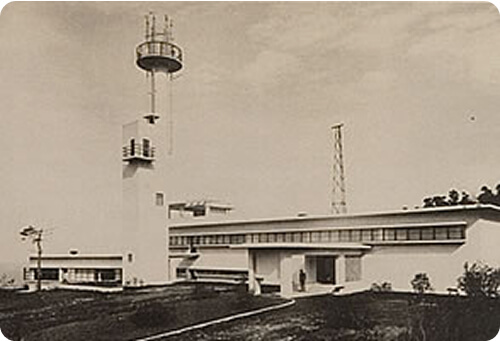
Matsumoto Tomekichi (first president) / Donated the Oshima Weather Observatory to Izu Oshima |
Matsumoto Tomekichi (the first president) received a request for assistance from the president of Tokyo Bay Kisen at the time, and after listening to the opinions of researchers in various fields, decided to donate the construction of the "Oshima Weather Station" on Izu Oshima, as it was of national importance. The reasons for the donation were: 1) weather observations on Oshima at the head of Tokyo Bay would be beneficial to Tokyo residents as a precaution against typhoons, etc., and 2) it would ensure the safety of navigation and mountain climbing on Oshima, which is visited by over 100,000 tourists annually. Matsumoto Tomekichi tried to donate the entire total cost of 180,000 yen, but Tokyo Bay Kisen agreed to pay 12,000 yen and other contributions, so he ultimately donated 150,000 yen. Matsumoto Tomekichi passed away in March 1938 (Showa 13) without seeing the completion of the station, but his successor, Matsumoto Shinta (the second president), took over the construction and completed it. In July 1938 (Showa 13), the dedication procedures to the government were completed, and the entire station was handed over to the Central Meteorological Observatory. The Oshima Weather Observatory, built in Motomachi, consists of a main building, a museum, a mountaintop observatory, a tide gauge station, an observation ship, etc. It is currently unmanned and had been moved to the joint government building, but in October 2009 it became the "Oshima Special Regional Meteorological Observatory" and its office was moved to the town hall. |
| 1939 (1939) |
Tomekichi Matsumoto and Fujikura companies establish the Fujikura Laboratory (now the Fujikura Foundation) for research and development and research grants. |
Matsumoto Tomekichi donated 100,000 yen to establish the Fujikura Laboratory, and Fujikura Electric Wire, Fujikura Industries, and Fujikura Chemical Industries donated 1.1 million yen to that amount, and preparations for the establishment were underway. Matsumoto Tomekichi passed away during this process, and Matsumoto Shinta (the second president) took over, and the Fujikura Laboratory (Foundation) was established in April 1939 (Showa 14). The purpose of this institute was to carry out research and development and to provide grants for research expenses to researchers. It was established on the site of Nippon Signal Co., Ltd. in Yono, Saitama Prefecture (now Saitama City). |
| 1965 (1965) |
The prewar scholarship business was revived as the "Fujikura Scholarship Foundation" |
Since the time of the first president, Matsumoto Tomekichi, the company has been running scholarship business and providing wide-ranging support for human resource development. It was later re-established as the Fujikura Scholarship Foundation in 1965 (Showa 40) after the postwar situation had stabilized. The Fujikura Scholarship Foundation's business are carried out in the spirit of giving back to society, with the aim of developing the human resources needed in all walks of life. Currently, over 500 students have received support, and are active in a variety of fields. |
| 2010 (2010) |
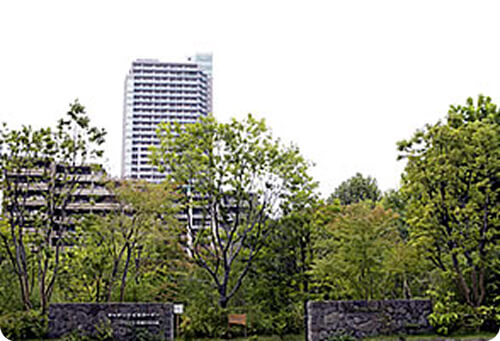
Established the "Fujikura-Kiba Millennium Woods" to support the local community and ensure biodiversity |
The increase in extinct species due to global warming and other factors has become a major issue. To business its third founding, Fujikura Group established the Fujikura-Kiba Millennium Woods in November 2010, a biogarden offering a rare opportunity to experience nature in urban areas, located in a corner of a former factory redevelopment business (Fukagawa Gatharia). This biogarden functions as both a "biotope" (a German word meaning a space where wildlife lives) to protect natural creatures, and a "garden" that serves as a place for local residents to relax and to educate children about nature and the environment, the future of the region. The garden features ponds and streams, and aims to recreate the natural beauty of Musashino, a plain along the Kanto coast that once existed in this area. |


The Fujikura Group Basic Principles on Social Contribution
[Major areas of activity]